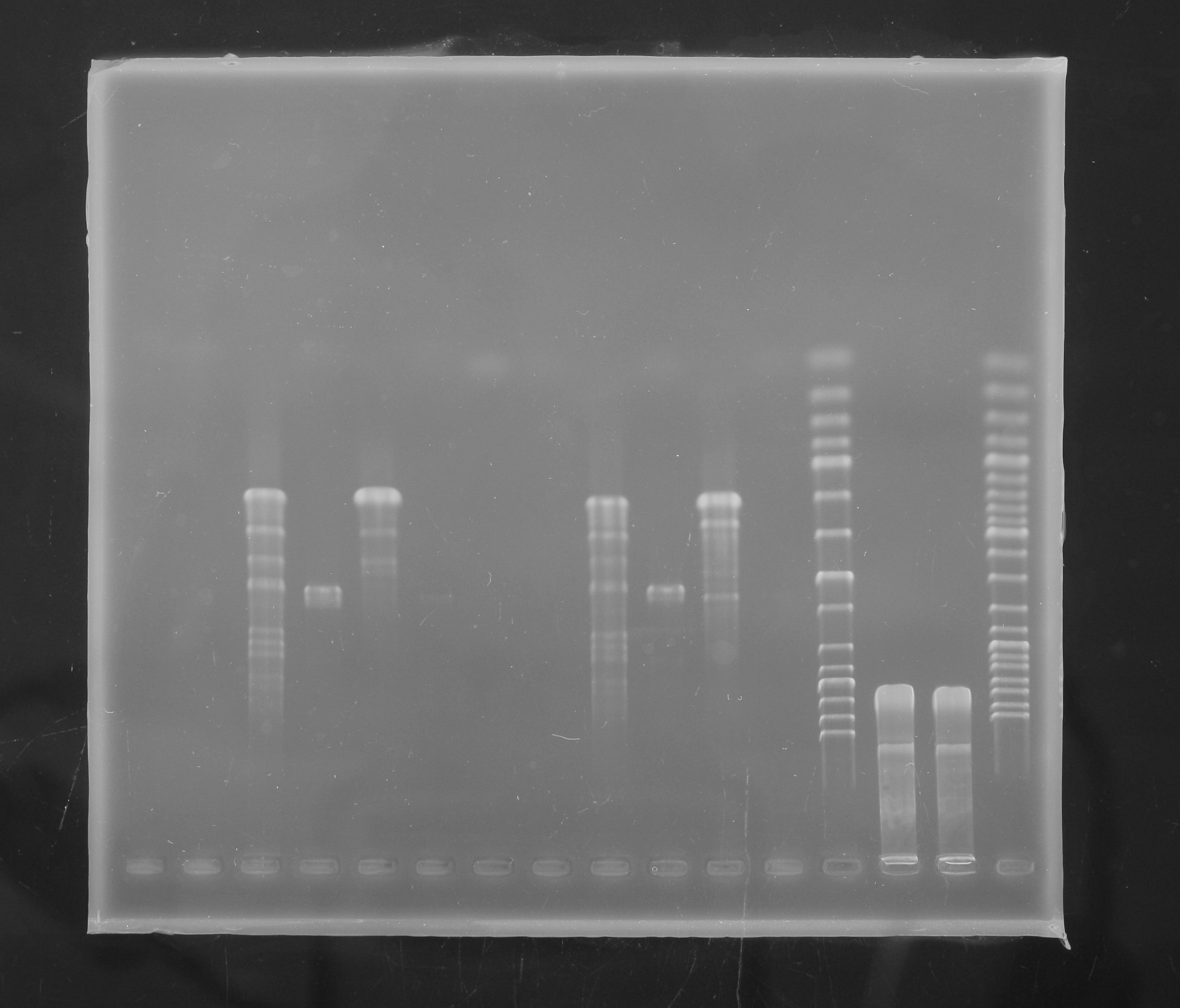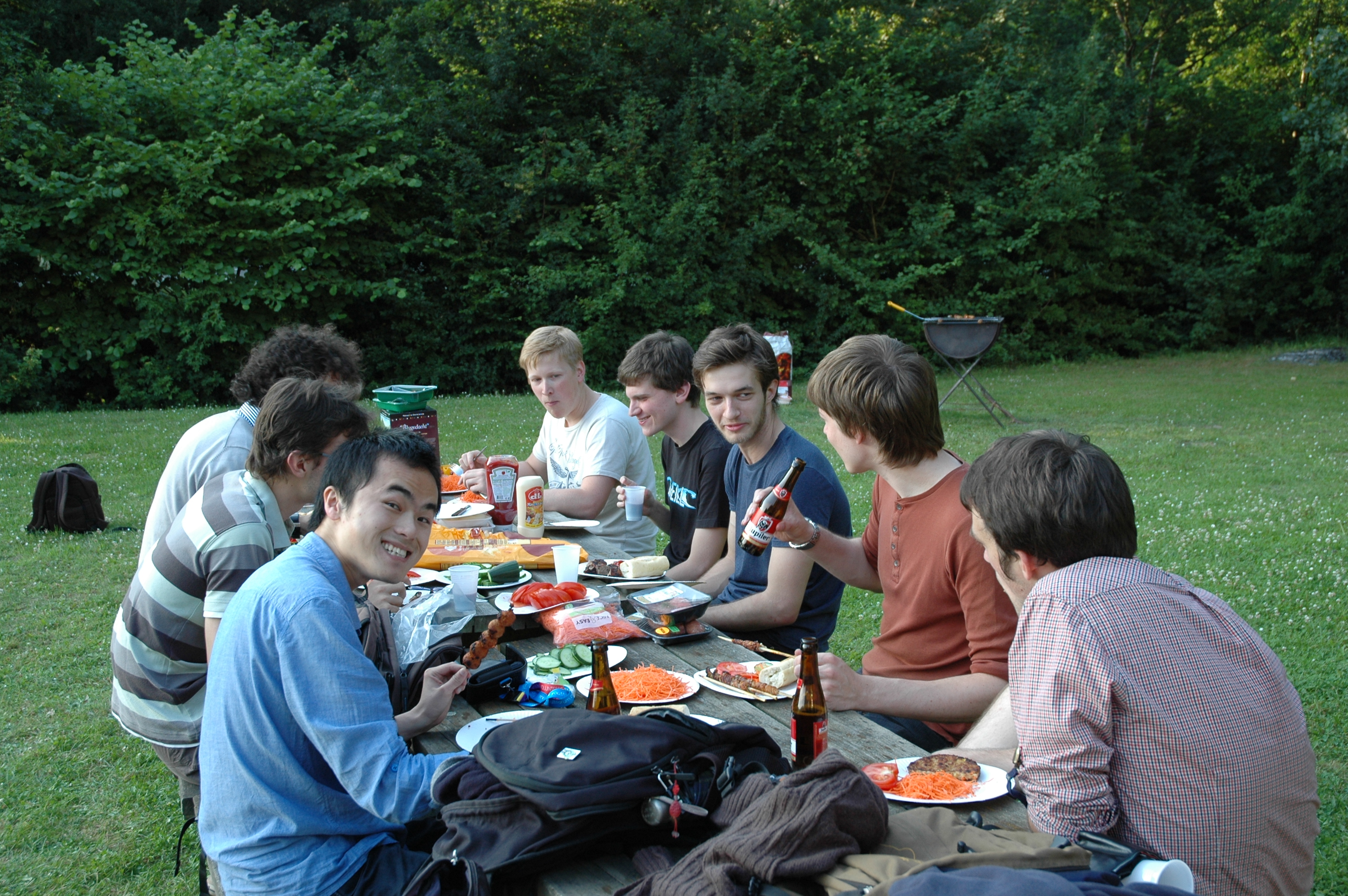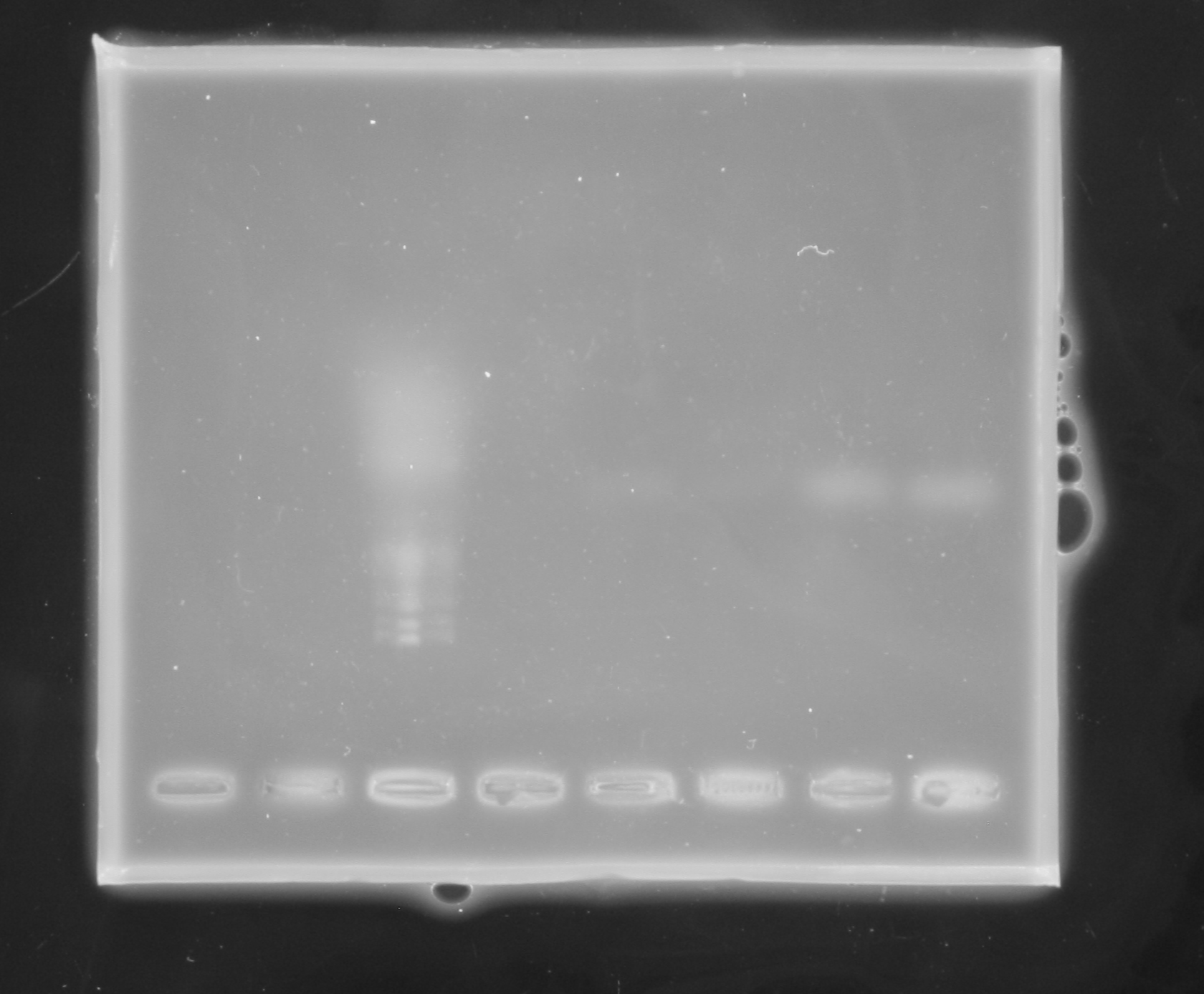Team:KU Leuven/Journal
From 2013.igem.org
Secret garden
Congratulations! You've found our secret garden! Follow the instructions below and win a great prize at the World jamboree!
- A video shows that two of our team members are having great fun at our favourite company. Do you know the name of the second member that appears in the video?
- For one of our models we had to do very extensive computations. To prevent our own computers from overheating and to keep the temperature in our iGEM room at a normal level, we used a supercomputer. Which centre maintains this supercomputer? (Dutch abbreviation)
- We organised a symposium with a debate, some seminars and 2 iGEM project presentations. An iGEM team came all the way from the Netherlands to present their project. What is the name of their city?
Now put all of these in this URL:https://2013.igem.org/Team:KU_Leuven/(firstname)(abbreviation)(city), (loose the brackets and put everything in lowercase) and follow the very last instruction to get your special jamboree prize!


Team
01/07
Today, everyone finally finished their exams, and we decided to get to work immediately so we held a kick-off meeting, so we had our noses all in the same direction.
09/07
It is always necessary to get feedback from important players in the field ,in order to get relevant feedback on your project. With that thought in mind we contacted Biobest.
Biobest is a Belgian company which exports bumblebees to over 50 countries worldwide. This makes them the leading authority in biological pollination. The presence of the bumblebees makes it necessary to avoid the use of chemical insecticides. For this reason. Biobest produces and commercializes more than 30 kinds of beneficial insects and mites, which are used for biological crop protection. This made them the ideal company to contact for advise and expertise.
After signing in at the reception we presented our project to prof. Felix Wäckers, their head of R&D. Not only did he give some excellent advise but with his help it will be possible to perform experiments with both ladybugs, aphids and perhaps even other insects.
But our visit didn’t end there, besides an interesting discussion we also got a guided tour of the facilities! Needless to say we are very excited to get to work there!
11/07
We decided to take advantage of the nice weather and had a BBQ. The morning after the iGEM-room was pretty empty, which might had something to do with the beers...
14/07
Members of this and previous years' Calgary iGEM team came to visit Leuven and, after a few belgian bears, were willing to give us lots of tips & tricks to get through iGEM summer.
24/07
Collaboration with other teams is important, so we went to Ghent to visit our colleagues of the [https://2013.igem.org/Team:UGent | University of Ghent. First, we went to the Faculty of Bioscience engineering, but everything was closed cause of the Gentse Feesten. We met four friendly students of the team and took some time to know each other. We talked about our projects and exchanged some ideas. Our view on the project is totally different and so we learned from each other. They had already a nice overview of the literature and we already did a lot of work for sponsoring, modelling and human practices. We made a common press article and hopefully we get synthetic biology and our projects in the picture here in Belgium. We’ll see each other soon again at Marktrock in Leuven.
Wetlab
26/06
Some of us have already finished their exams so we started working in the lab. For now we just made the antibiotics solutions that we will have to use this summer.
27/06
Today we poured the agar plates with and without the antibiotics.
28/06
Just one thing to do today: make the FSB buffer to make competent cells. Easy job, but we have to recover from the exams, and it is almost weekend.
01/07
As the first day of July, our job today wasn't too heavy. We started making the competent cells. The main task was to inoculate Top10 and DH5alpha strains from agar plate into the medium, herein we use tips to transfer both the strains into 3ml LB medium under laminar flow, two times for each strain. Then incubate them overnight.
02/07
In the morning we continued yesterday's job, working with competent cells and in the afternoon we tried the transformation efficiency kit. Fingers crossed!
03/07
We checked the plates that grew under 37°C overnight, and surprisingly no colony appear in any of them! Now we have to figure out what went wrong. Possible reasons are:
- Bad competent cells (please not!)
- We didn't use enough recovery time for the cells.
- The cells need more time to grow.
To examine what went wrong we did the experiment over again, but this time we used our own pUC 19-vector and let the cells recover for 2 hours instead of one.
We also prepared the SOC-medium for future use.
04/07
Hurray! This time we do have cell growth, so we counted the cells and calculated the transform efficiency. This was still quite low though... We prepared the GTE-buffer for future use and prepared agar medium. In the afternoon, we found out that the medium in the autoclave spilled out everywhere in the autoclave, possibly due to the pressure in the autoclave. Lukas was the lucky guy who got to clean out the autoclave.
05/07
We selected 16 parts to work with further
| Plate 1 | Plate 2 | Plate 3 | Plate 4 | Plate 5 |
|---|---|---|---|---|
| 1C BBa_K398326 | 1I BBa_B0032 | 5E BBa_R0040 | 6I BBa_J45199 | 1H BBa_B0030 |
| 1G BBa_K314100 | 7E BBa_K808000 | 20O BBa_I13453 | 19K BBa_J45014 | 2M BBa_B0034 |
| 3D BBa_K823017 | 15N BBa_I719005 | |||
| 3O BBa_K608002 | ||||
| 4D BBa_K314103 | ||||
| 5E BBa_K608006 | ||||
| 17D BBa_K864600 |
During the heat shock the heat automatically turned off after one round, wicht we didnt realize at first. So for the bricks from plate 2 and 3, the heat shock temperature is a bit lower (around 37°C). Hence during the plating we used 50µl of transformed competent cells instead of 20µl for the tubes from plates 2 & 3.
We also inoculated methyl salicylate producing cells (received from iGEM) on both Amp & Kan plates.
08/07
Unpatient as we were, we first checked the plates of the transformed competent cells and found out that only 4 petri dishes have small amount of colonies (7E2 top10, 5E3 top10, 1G1top10, 5E3 DH5alpha). Interestingly, cells plated on plates 2 and 3 (the ones where we used 50µl cells instead of 20µl), were most succesful (serendipity someone?), which means that the lack of colony may be caused by low amount of cells put on the petri dishes. This in turn also proves that the transforming efficiency is quite low. We should repeat this step with 50µl or more cells today.
In the afternoon we inoculated the methyl salicylate producing strains with medium containing both ampicilline and kanamycin for each AB medium, the volume is 3ml per tube, and we repeated 3 tubes for each AB medium.
Moreover, we transformed the unsuccessful biobricks again into the competent cells.
09/07
We made methyl salicylate producing cell stocks from the inoculation of yesterday and tried to isolate their plasmid.
We also tried to make competent TOP10 and DH5alpha cells using the Inoue method .
10/07
We had a busy lab day today, with 3 main experiments running parallel, so all hands on deck!
In the morning, we first made the gel to separate the plasmid that we extracted yesterday. The gel looked good, the separation is very clear.

Afterwards, we extracted the plasmid from the gel by using the gel extraction kit and measured the amount of DNA with nanodrop.
We also finished with the Inoue method to make competent cells.
We wanted to do a colony PCR on Streptomyces, so first we prepared the primer stocks for that.
Ingmar extracted the genome from Streptomyces at IMPG using 4 different methods (as Streptomyces is gram negative, it is a bit difficult to extract the genome)
- microwave Streptomyces for 4mins
- Streptomyces in water and 0.2%SDS, 4min microwave
- Streptomyces in water and 1% SDS, 4min microwave
- Streptomyces in TE buffer, 0.2% SDS, 4min microwave
We ran a colony PCR for all these streptomyces + a negative control.
In the afternoon, we also performed the plasmid extraction of all the successfully transformed biobricks.
11/07
Today is a Flemish holiday so the lab was closed unfortunately.
12/07
Today was again an easy day. We poured the IPTG+AMP plates, then prepared the primer stocks for the new arriving primers (iGEM 0009, iGEM0010, iGEM0011, iGEM0012). In the afternoon, we cleaned up the PCR product and ran the gel of the DNA we got from the colony PCR. Finally we stored the gel in TAE buffer at 4° C, so that we can visualize the gel by next monday.
15/07
We first visualized the gel of EBF we ran last friday, and for pretreatment 1 and 2 we can see clear band of DNA.
We ran a high fidelity PCR for the EBF (1 & 2 pretreatment) as well as methyl salicylate device. For the case of methyl salicylate device, because it consists two parts (chorismate to salicylate 1955bp, salicylate to methyl salicylate 1292bp), so we ran the PCR for both parts separately, and for the first part, due to its long length, we used 1 min for the elongation in the cycle instead of 45s.
16.07
We first made EBF synthase gene into stock from the PCR products, 2 stocks, EBF1 and EBF2, dilute 15 times (1µl PCR products + 14µl miliQ)
Then we purified the PCR products and did a nanodrop for the PCR products we got yesterday:
concentration(ng/µl) 260/280 260/230 GENE
tube1 23.3 1.89 0.43 EBF1 tube2 37.0 1.61 0.68 EBF2 tube5 14.4 1.61 0.30 MS second part(salicylate -> MS) tube6 16.3 1.69 0.47 MS second part(salicylate -> MS) tube7 35.9 1.85 0.54 MS first part(chorismate -> salicylate) tube8 93.8 1.56 0.81 MS first part(chorismate -> salicylate)
In the meantime, we also performed plasmid isolation for the successfully electroporated biobricks (1I2, 1G1, 5E3, 2M5, 1H5, 7E2) as well as MS.
In the afternoon, we performed digestion and ligation for EBF1 gene (of purified PCR) and chloramphenicol backbone. (refer to digestion and ligation protocol). This purpose of this step is to make EBF biobrick.
As the amount of backbone DNA we received from iGEM is very small, we decided to amplify the backbones ourselves. For this the procedure is to inoculate 3O1 transformed strain into 3ml LB medium, then isolate the plasmid, cut the backbone out of the plasmid instead of cutting the target DNA out usually. the reason why we choose 3O1 is because this biobrick is quite small, with 2 terminaters.
in the meantime, because of MS cell actually does not need IPTG, it should be constitutive active, so we inoculate the original MS cells onto Amp plate, electroporated MS cell onto Kan plates, incubate at 25°C (we did in room temperature), over night.
 "
"





